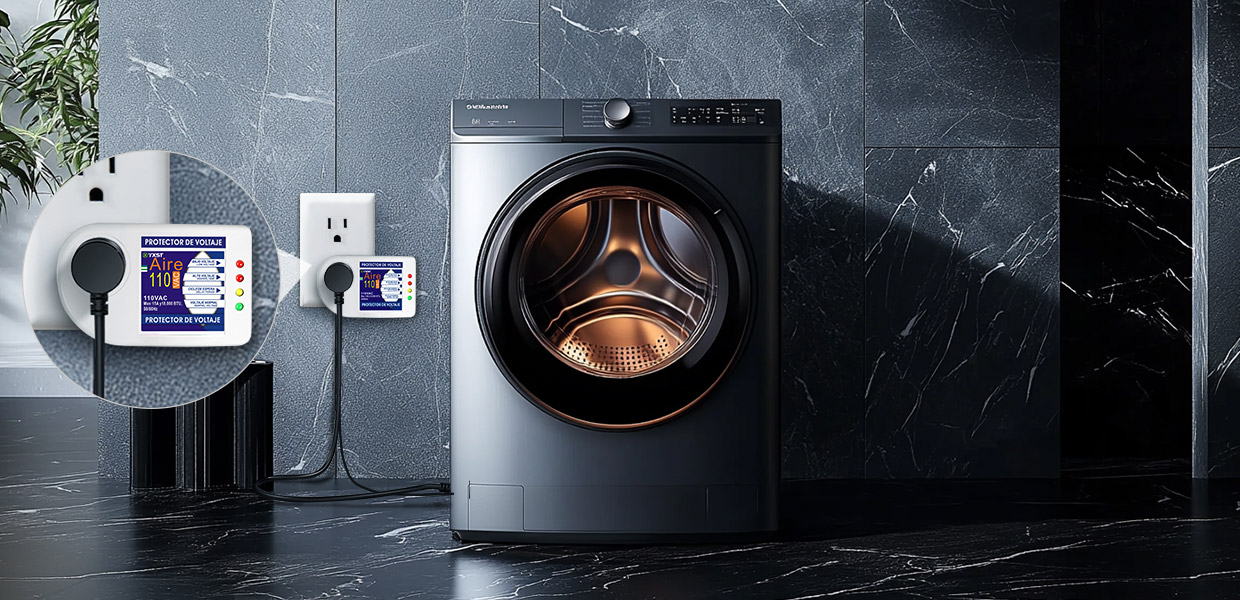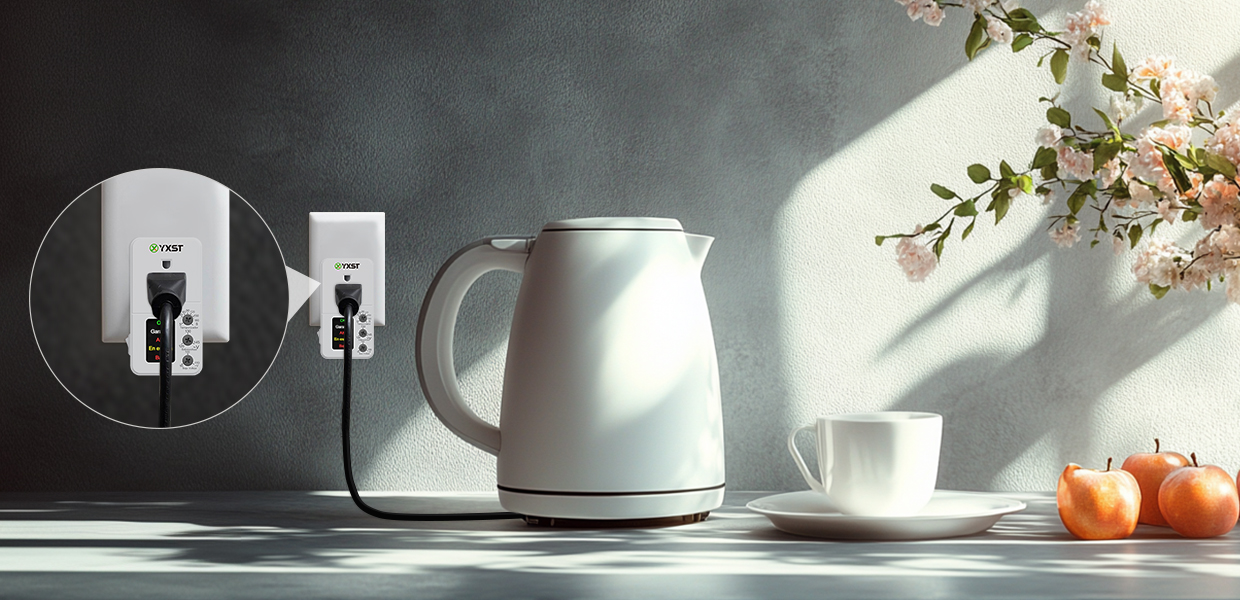Surge Protector For Home: How to Keep Home Electronics Safe
Date:2025-05-07 Click:920
This comprehensive guide will cover everything you need to know about home surge protectors, including how they work, different types, and installation tips.
What Is Surge Protector For Home?
A surge protector (also known as a surge suppressor) is a device designed to protect electrical appliances from voltage spikes. These spikes can occur due to lightning strikes, power outages, or fluctuations in the electrical grid.
How Does Home Surge Protector Work?
Core Components
Voltage detection chip: monitors the effective value of voltage in real-time.
Relay or solid-state switch: cuts off the circuit when the voltage is abnormal.
Workflow
Detect voltage: The chip continuously analyzes whether the voltage exceeds the set range (such as 170V~250V).
Cut off power: If overvoltage or undervoltage occurs, the control relay disconnects the circuit to protect the appliance.
Automatic recovery: After the voltage is normal, the power is turned on again after a few seconds (to prevent frequent switching).
Why Do You Need a Surge Protector at Home?
Without protection, power surges can:- Damage sensitive electronics.
- Shorten the lifespan of appliances.
- Cause data loss in computers.
Types of Surge Protectors for Home Use
1. Power Strip Surge Protectors
- Common for home offices and entertainment centers.
- Offers multiple outlets with surge protection.
- Best for low to moderate power devices (TVs, computers).
2. Whole-House Surge Protectors
- Installed at the main electrical panel.
- Protects all appliances in the home.
- Ideal for areas prone to lightning strikes.
3. Outlet-Mounted Surge Protectors
- Compact design plugs directly into a wall socket.
- Good for small spaces (bedrooms, kitchens).
4. UPS (Uninterruptible Power Supply) with Surge Protection
- Provides backup power during outages.
- Essential for computers and networking equipment.
Key Features to Look for in Home Surge Protector
1. Joule Rating
- Measures energy absorption capacity (higher = better).
- Recommended: 140+ joules for basic protection, 3000+ joules for high-end devices.
2. Clamping Voltage
- The voltage level at which the protector activates.
- Lower clamping voltage (e.g., 330V) offers better protection.
3. Number of Outlets
- Choose based on how many devices you need to protect.
4. Warranty & Connected Equipment Guarantee
- Some brands offer compensation if their protector fails.
Home Surge Protector Installation & Maintenance Tips
Where to Place Surge Protectors?
- Near high-value electronics (TVs, computers).
- Avoid daisy-chaining multiple protectors.
When to Replace a Surge Protector?
- After a major power surge.
- If the protection indicator light goes off.
- Every 3-5 years for optimal safety.
Common Myths About Surge Protectors
Myth 1: Power Strips = Surge Protectors
- Not all power strips offer surge protection.
Myth 2: Surge Protectors Last Forever
- They degrade over time and need replacement.
Myth 3: Only Lightning Causes Surges
- Appliances like AC units can also cause minor surges.
Conclusion
Surge protector for home is a small investment that can save thousands in damaged electronics. Whether you need a simple power strip or a whole-house solution, choosing the right protector ensures long-term safety for your devices.
For maximum protection, consider combining outlet surge protectors with a whole-house system. Stay protected and enjoy peace of mind knowing your electronics are safe from unexpected power spikes.




